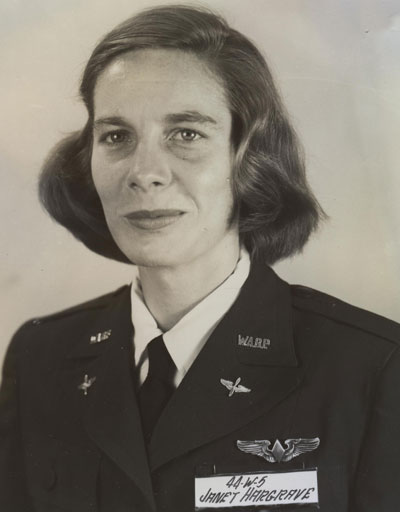Janet Hargrave 44-W-5
|
 |
|
Janet Hargrave, 84;
Flew Noncombat Missions for WASP
Janet Hargrave, one of only 1,074
female pilots who earned their wings as members of the Women Airforce
Service Pilots, a group that flew noncombat missions across the United
States during World War II, has died. She was 84.Hargrave died Jan. 4 at her
home in Malibu after a series of strokes, according to Pauline Greene, a
longtime friend. Starting in 1942, some 25,000
women volunteered to go through WASP training. Only 1,830 were accepted,
and nearly half did not graduate.The group's seven-month preparation
time included a physical regimen that was the same as the one for male
Army Air Forces cadets. The women also took courses in pilot navigation,
meteorology, mathematics and physics. |
After the war, she operated a flight school in Nashville for several years before she settled in Southern California. She was a social worker for Los Angeles County and later joined her father in his business, Palmer Hargrave Lamps. In 1955, she bought land in Malibu and built a house where she lived with her dogs, cats and the occasional rescued bird. She also kept a horse for many years. When her father died in 1978, Hargrave took over their lamp business, which she sold after 23 years. Physically strong until the last months of her life, she traveled extensively after she retired. Last year she went to Machu Picchu, Peru, and climbed to the mountaintop city, once an Incan community. She remained a member of the WASP network and attended meetings. With her death, there are about 400 living members. The youngest are in their 80s. Hargrave is survived by a sister, Marian, of Palm Springs. A memorial service in her honor is planned for 2 p.m. today. For details, call (310) 457-2264.
Reprinted from the
LA TIMES Jan. 20, 2005 |
return